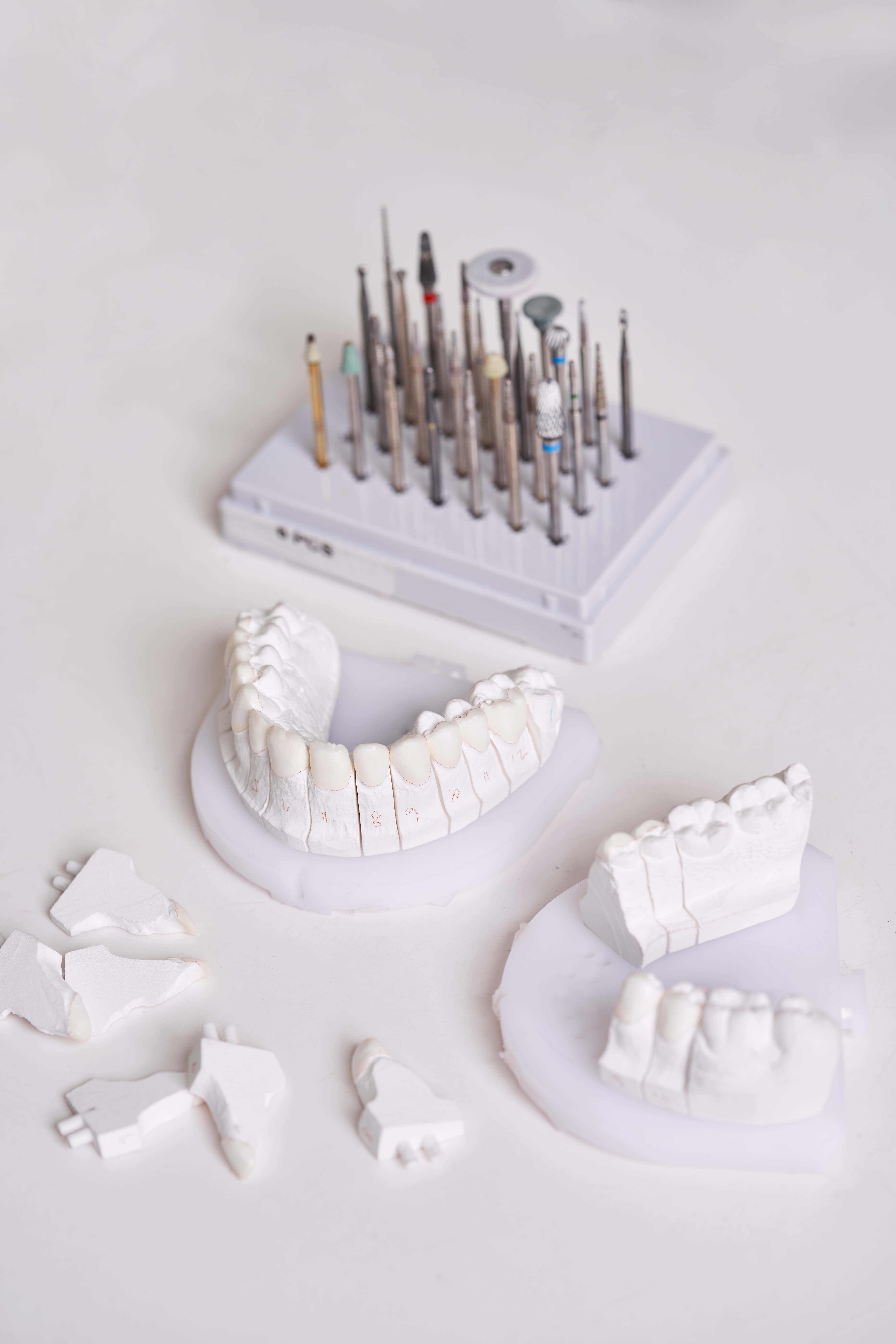
Marilyn Monroe famously said, “A smile is the best makeup any girl could wear”. Which, if you’re happy with your teeth, is something you probably agree with. But if not, your smile could be holding you back. From teeth whitening to Invisalign, there are countless ways you can improve the appearance of your teeth – but the most celebrity-approved, totally transforming way is by adding veneers.
And who better to ask all about veneers than Dr. Apa – aka the go-to guy for all things perfect smiles and pearly whites? With a client list worthy of its own red-carpet event (Kendall Jenner, Jennifer Lopez and Huda Kattan included), it’s safe to say he knows a thing or two about how to achieve a superstar smile. Not to mention the fact his team specialises in creating flawless, handmade veneers in their in-house lab, right here in Dubai.
Read on to find out everything about veneers and what to consider if you’re thinking about getting them done.

GRAZIA: What exactly are veneers?
Dr. Apa: Veneers are dental restorations – like a filling or crown. When terms like “cosmetic dentistry” are thrown around, the restorative piece gets lost. In the case of veneers, we’re using hand-layered porcelain to restore tooth shape, colour and position.
For a smile makeover to be successful, both the dentist and the ceramist need to be excellent; it’s a collaboration of talents, and I will tell you humbly but also honestly, Apa Aesthetic is staffed by the world’s best dental professionals. Our restorations are hand-layered using porcelain powder. Digital technology is a part of our workflow, but it’s more utilised behind the scenes for efficiency and accuracy. Restored teeth should look like teeth and hand-layered porcelain is part of making that happen.
GRAZIA: What purpose do they serve?
Dr. Apa: When done correctly, there are so many benefits to veneers – the ability to fight ageing, improve function and, of course, enhance overall appearance. For me, it’s about seeing what’s there, or what’s supposed to be there, and recreating that in a natural way.
GRAZIA: Who are they good for?
Dr. Apa: The short answer is anyone who is old enough to practice good oral care can be a good veneers candidate. The thing to remember, though, is that the lifespan of veneers is typically 15–20 years, so depending on when you get them, it may not be a one–time thing.
Veneers have both aesthetic and functional benefits. For example, when you grind – and, by the way, tooth enamel is the hardest substance in the body – you shorten your teeth, leading to an over-closed or collapsed bite, overworked muscles and pain. (This can also happen from natural wear over time). With porcelain, we can rebuild the missing tooth structure, restore your bite to better support the muscles and eliminate the pain. Like I said, calling a smile makeover “cosmetic dentistry” can really oversimplify the work and overlook the possibilities.
If someone has small teeth and wants to make them bigger, that’s a great candidate. If someone has existing fillings or poor dental restorations that need to be cleaned out, that’s a great candidate. Someone who’s worn their teeth over time, and now needs volume restored, that’s a great candidate. Anyone can be the “perfect candidate” for veneers, depending on what he or she hopes to achieve.

GRAZIA: What’s the biggest problem people face with veneers?
Dr. Apa: Veneers, when done correctly, do not cause problems; they solve problems. Caring for veneers is no different from caring for natural teeth. So, I would say the thing to really consider is their lifespan.
GRAZIA: How do you care for them/keep them flawless?
Dr. Apa: Thinking about veneers as a dental restoration helps patients make sense of the aftercare. Living with veneers is no different from living with fillings or crowns. It’s important to practice good oral hygiene – brushing, flossing and getting professional cleanings two to three times a year.
It is recommended that you replace porcelain veneers every 15 – 20 years. Some people keep them longer. It just depends on the patient and how well they maintain their oral hygiene. Even after 15-20 years, veneers can still look pretty good. There isn’t necessarily a tell-tale sign that it’s time for a new set. Maybe there’s a minor recession or chipping or wear – if patients haven’t been diligent with their nightguard or retention. Either way, after 15-20 years, it’s typically time to reset the clock, and a patient’s aesthetic or functional needs may have changed. We recommend replacing all existing restorations at the same time, and sometimes we need to restore additional teeth because we’re accounting for facial change, like loss of collagen in the cheeks.
GRAZIA: I don’t want to look like I have big fake teeth – are veneers for me?
Dr. Apa: Haha, big fake teeth aren’t for me either! Taste is subjective and there are a lot of providers out there with their own unique aesthetic. I think restored teeth should look like teeth and the patients who see me generally agree. I always say your teeth shouldn’t walk into the room before you do. The idea is to enhance.

GRAZIA: Is it a myth that veneers cause bad breath?
Dr. Apa: Veneers don’t cause bad breath. Bad oral hygiene causes bad breath. Plaque harbors bacteria that cause bad breath. Lack of saliva leads to bad breath because the bacteria isn’t being washed away. If you are really concerned about bad breath, talk to your dentist. There’s a condition called halitosis, which is chronic bad breath caused by certain bacteria that produce foul-smelling gases. There are things that can be prescribed to help, but again it’s something that would need to be diagnosed by a dentist.
GRAZIA: What about your natural teeth being shaved down to little pegs?
Dr. Apa: You’re referring to what we call “prep” – or preparing the teeth for their restoration. We remove much less than you think, and sometimes none at all. It really depends on the original tooth position and what we’re trying to achieve. If it’s an additive case, for example – meaning we are building the smile out – we do little to no prep. For me, it’s a very precise process and the goal is always to preserve as much of the natural tooth structure as possible.
Different restorations require different preparations. A veneer prep is very different from a crown prep. I’ve had patients come to me because they want to redo work they had done elsewhere and they say to me, “I want to redo my veneers” and they don’t even know that they actually have crowns!
GRAZIA: What’s your biggest piece of advice for anyone looking to get veneers?
Dr. Apa: Do your research!







